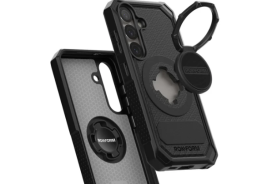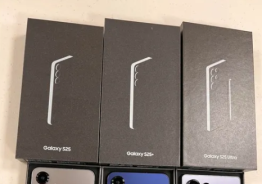One of Apple's initiatives is the self-repair program. Over time, it has been introduced in such a way that consumers can now fix their products on their own without drawing attention to this process in an Apple Store.
It continues with release under the program iPhone 16, iPhone 16 Plus, iPhone 16 Pro, and iPhone 16 Pro Max. Apple still continues to promote the process further by providing the users' access to all necessary parts, tools, and instructions to have a DIY repair of the phone at home as easily accessible as possible.
iPhone 16 Self-Repair Support: What's New?
Apple launched Self-Repair support for the iPhone 16 series with parts directly sourced from Apple's suppliers. The users can opt to buy or lease separate parts, including displays, back glass, cameras, speakers, and batteries, to repair the device. This expansion of the program means users who had problems with their iPhone 16 devices, perhaps due to some accidents or damage, now have the hassle taken out of the process.
The parts found at the Apple Self-Service Repair Store are genuine, so the customer is assured that they will work and match perfectly. The headaches associated with third-party parts being too small or just not working right will be a thing of the past. A major change of heart for Apple, who once only allowed repair to authorized people.
The Process of Repair: Hard, But Possible
The technical know-how is still involved, although the phone is easier to self-repair than the iPhone 15 series. Pro series are more complex because they use older battery adhesive strips instead of removable detachable power cells. Though Apple has aimed at building the iPhone 16 series to be friendlier in repairs, users have to remember it may just be a long laborious process for anyone without experience.
For those with no DIY repair experience, it may still be better left to a professional, ideally an authorized Apple repair technician or a phone repair shop in town. Still, for users who are confident with the process, the availability of parts directly from Apple assures them that they can do the job by themselves with minimal hassle, as per Gizmodo.
Are DIY Repairs Really Worth It? The Costs of DIY Repairs
Although Apple's self-repair program could in theory save one money, parts and tools would cost quite a bit. For instance, if you would like to replace the display on an iPhone 16, it would cost about $265 if you agree to recycle the old components. The rental charge for the tools needed would be $49 for a 7-day kit if you do not already possess any of the necessary tools.
n fact, the overall cost could be that much higher if you choose to buy the tools and repair them someday in the future.
While out-of-warranty repairs at an Apple Store cost $279, with AppleCare Plus, you'll pay just $29. DIY repair remains unaffordable, though, that price tag automatically factors in the cost of any specialty tool.
Why Apple's Self-Repair Program Matters
Although the process of self-repair is not flawless and is costlier, it remains a critical requirement on the road to sustainability at Apple. This decision to make original parts accessible will encourage users to repair rather than replace their gadgets, thus avoiding electronic waste.
In addition, the release of iPhone 16 parts can be considered as an easy way through which third-party repair shops would be notified about the kinds of services they could provide at lesser costs.
Gains from the self-repair initiative will be all the bigger for Apple when consumers prove more willing to hold on to their devices and repair them instead of replacing them.
Still, many Apple users think it is overpriced while others still prefer going to cheaper repair stores for replacement.
Related Article: How to Unlock Your iPhone 16 in Different Ways
© Copyright 2025 Mobile & Apps, All rights reserved. Do not reproduce without permission.















